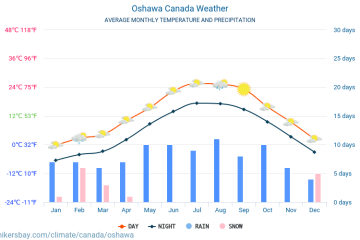The Impacts of La Niña Winter on Canada’s Weather
Understanding La Niña
La Niña is a climate phenomenon that occurs when sea surface temperatures in the central and eastern Pacific Ocean are cooler than average. It is part of the El Niño-Southern Oscillation cycle and has significant implications for weather patterns globally, particularly during the winter months. The current forecasts indicate that Canada may experience a pronounced La Niña winter, affecting temperatures and precipitation significantly.
Current Winter Predictions
As of late 2023, meteorologists are closely monitoring La Niña conditions that were already observed in spring and summer. The Climate Prediction Center has declared a 70% chance that La Niña will persist throughout the winter, likely leading to colder temperatures and increased snowfall in many parts of Canada. This pattern is particularly noted in western provinces such as Alberta and British Columbia, while the eastern regions may see milder temperatures but increased precipitation.
Regional Effects
The impact of a La Niña winter can vary widely across Canada. In the west, colder temperatures are expected, which can influence skiing conditions and water reservoirs for the upcoming spring and summer. Meanwhile, the Prairies could experience drier conditions, which may affect agriculture, with farmers needing to adapt their strategies to mitigate potential impacts.
Conversely, Ontario and Quebec may face fluctuations, where the La Niña pattern could lead to increased precipitation but not necessarily extreme cold. This variability makes it crucial for residents and businesses to prepare for sudden weather changes. The Maritime provinces may also see varied effects, ranging from warmer temperatures to potential snowstorms.
Conclusion: Preparing for a La Niña Winter
The anticipated La Niña winter is poised to bring diverse challenges and opportunities across the country. Canadians should stay informed through local meteorological reports and consider adjusting winter plans, whether it involves travel, heating, or agricultural activities. As the winter approaches, it will be essential to monitor updates on weather conditions regularly, ensuring safety and preparedness amidst changing climate patterns.









